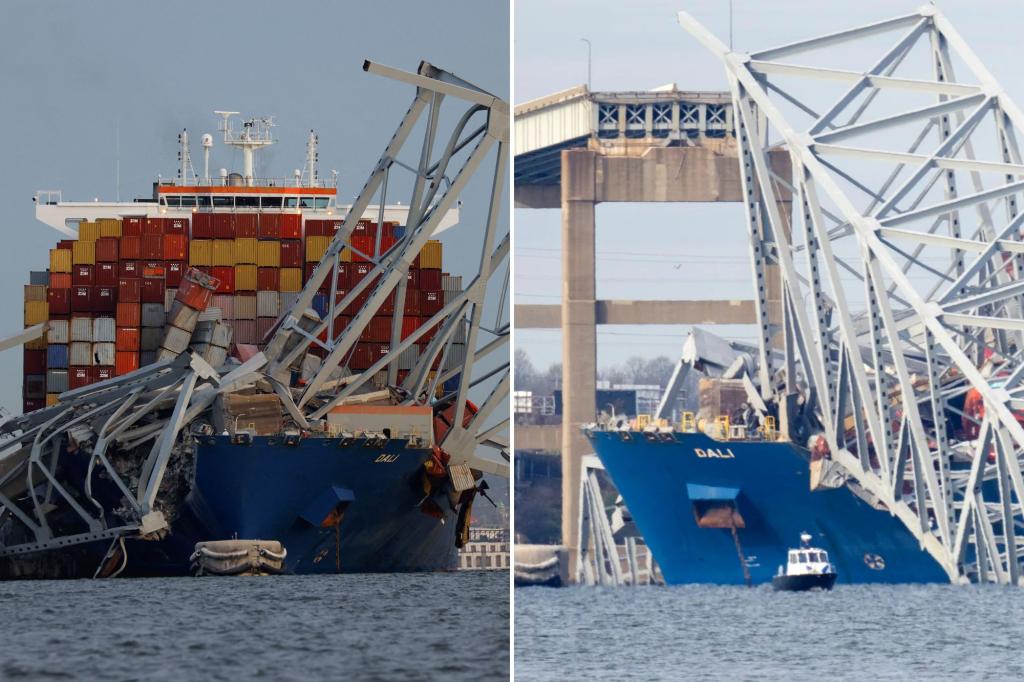The collapse of the Francis Scott Key Bridge in Baltimore, Maryland is currently under investigation, with a focus on whether contaminated fuel played a role in a cargo ship losing power and crashing into the bridge. The ship, a 948-foot-long container ship called the Dali, remained stuck on a pillar of the collapsed bridge, with investigators yet to board the vessel as of late Tuesday. The incident has transitioned from a search and rescue operation to a recovery operation, with lights on the Dali flickering an hour into the trip, indicating power issues.
Following the blackout on the ship, a harbor pilot and assistant reported a loss of propulsion and power to the Coast Guard. The ship was unable to drop anchors to stop drifting, leading to a mayday call before the collision with the bridge. While ship blackouts are rare, they pose a significant risk to vessels at sea. The investigation will involve reviewing the ship’s operations and safety record, including potential issues with its main power generators and fuel contamination, factors that can result in complete blackouts and loss of propulsion.
Authorities have reported that six individuals are unaccounted for following the bridge collapse, with two individuals rescued from the river by emergency personnel. Efforts are underway to locate seven missing vehicles that fell from the bridge span, using sonar technology. Footage shows the ship’s power flickering on and off before the crash. The bridge collapse caused significant destruction, with a resident describing the event as feeling like their house was falling down. The Dali had previously been involved in a collision while leaving the Port of Antwerp in 2016.
The investigation into the incident includes obtaining data recorders from the vessel to understand the events leading up to the crash. The vessel has undergone numerous inspections without detention, although deficiencies were noted in two reviews related to hull damage and propulsion issues. Operated by Singapore-based Synergy Marine Group, the ship was on a trip to Sri Lanka from the Port of Baltimore. The vessel, constructed by South Korea’s Hyundai Heavy Industries in 2015, departed from the terminal with two tugboats guiding it, with two pilots and 22 crew members on board during the crash.
The collapse of the Francis Scott Key Bridge is anticipated to result in significant insurance claims, covering the loss of the structure, disruptions to businesses using the port, and potential claims from victims against the ship operator. The bridge, built in 1977 for over $60 million, is expected to lead to a multibillion-dollar series of claims and insurance payouts when adjusted for inflation. The incident highlights the risks associated with large vessels maintaining speed to avoid external forces like winds and currents. The investigation involves a multi-agency effort to uncover the events leading up to the bridge collapse and potential factors contributing to the blackout on the cargo ship.


